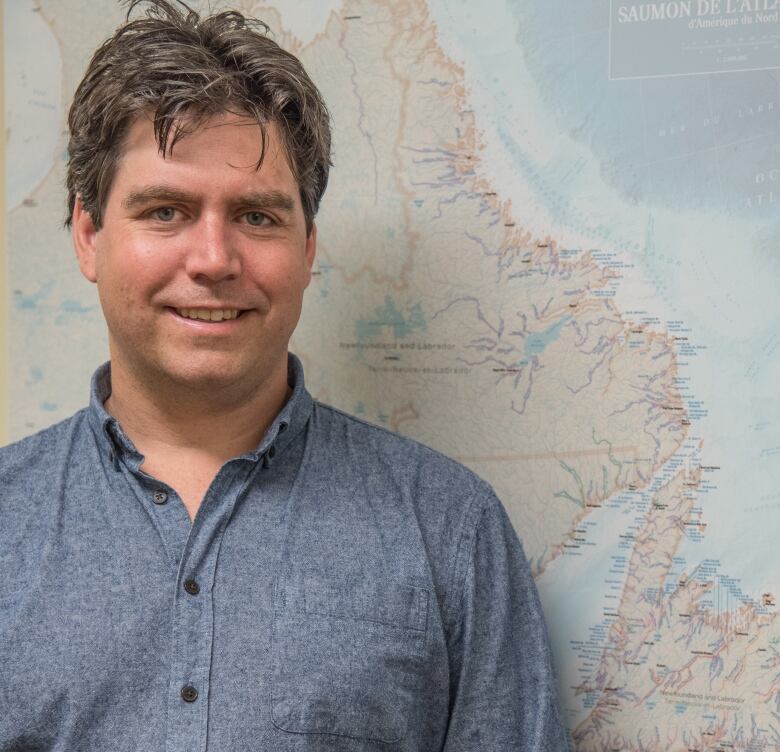Sea ice could pose a significant risk to Grieg NL aquaculture project, documents suggest
Plan expected to cost $250 million and create more than 800 jobs

Documents obtained through access to information highlight the risks that sea ice could pose to the massive Grieg NLproject planned for Newfoundland's Placentia Bay, where the company plans to raise salmon in one of the most ambitious aquaculture projects in Canadian history.
Papers obtained by the Atlantic Salmon Federation include a report byBruce Colbourne, a professor of ocean and naval architectural engineering at Memorial University. Colbourne was commissioned in 2018 to review portions of the environmental impact statement dealing with potential sea ice effects on the project.
"Placentia Bay is generally viewed as a relatively ice-free bay, but historical data indicates ice does occur in the bay and in the regions proposed for the fish farm cages," Colbournewrotein his report.
Colbourne expressed concern with the calculated 15 percent annual risk rate of ice occurrence, and argued that the risk factor should be calculated over a longer period of time.
"The EIS [environmental impact statement] acknowledges the potential for ice but appears to rely on the relatively low probability of occurrence as a mitigating factor," Colbourne wrote.

Based on the annual risk rate of ice, Colbourne calculated that "significant ice can be expected every eight to 10 years" and that it seemed likely that frozen ocean spray or freezing snow will have a more frequent effect on the cages where salmon will be kept.
"Assuming the proposed operation will continue for a period longer than 10 years, there will be years in which sea ice does occur at the cage sites," Colbourne said.
Based on historical data, Colbourne concluded the type of ice that would occur in the bay would be between 0.3 to 1.0m in thickness. He said these conditions are "sufficient to cause problems for any sea cage installation."
Grieg NL, which is a subsidiary of the Norwegian aquaculture giant Grieg Seafoods,has for years been developing a $250-million project to raise salmon in Placentia Bay, with expectations of creating more than 800 jobs.
The company has not responded to interview requests that CBC made earlier this week for comment.
The Department of Municipal Affairs and Environment told CBC that Colbourne's comments were received in June 2018 and then reviewed by an assessment committee during the EIS review.
"Upon further review, Dr. Colbourne advised on Dec. 18, 2018 that the information presented in the EIS was reasonable and no outstanding concerns remain," a department official said in an email Wednesday.
'A significant blind spot'
Neville Crabbe, the executive director of communications at the Atlantic Salmon Federation, the conservation group that made therequest, said the process for making decisions on the project seemsto be more informed by politics than science.
He said acomprehensive ice mitigation strategy has not been putforth in Grieg's documents.
"The fact that the government of Newfoundland and Labrador has approved this environmental effects monitoring plan without any consideration given to ice really shows that they're willing to play Russian Roulette with the environment and wild species in Placentia Bay," Crabbe said.

Crabbe says that by putting the sea cages in places that can expect significant ice over a period of eight to ten years, you risk a catastrophic failure that could spill thousands of aquaculture salmon into the wild.
The Atlantic Salmon Federation has challenged Grieg NL's proposal, including in the courts.
Crabbe said he is also concerned that the findings of the environmental assessment committee and their recommendations have not been made public.
"We don't know what their recommendation to the minister was. That has been withheld, despite challenge after challenge," Crabbe said.
"I think this is one example of a significant blind spot that raises doubt about the acceptability of the environmental impact statement as a whole."
Grieg plans to build a hatchery where smolt can be cultured onshore at Marystown. Non-reproductive salmon will be raised in cages at sites in the bay, and salmon will then be processed into fillets and other products at a plant onshore.












_(720p).jpg)


 OFFICIAL HD MUSIC VIDEO.jpg)
.jpg)



























































































